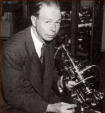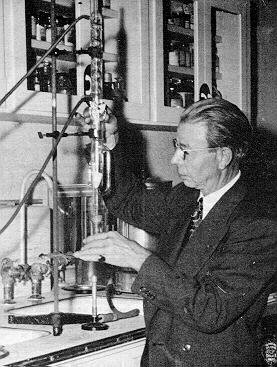
RIFE CRANE
Royal Rife Machine Laboratory reports

 |
RIFE CRANE Royal Rife Machine Laboratory reports |
 |
|
A Discussion on Rife machine Laboratory Research Royal R. Rife June 14, 1958
We have proven definitely that cancer is a virus or the filterable form and pathogenic portion of chemical constituents that produces the disease. In 3 out of 10 cases we can produce the disease or the symptoms of the disease without any bacteria. I have a large slide file containing approximately 20,000 cancer tissue slides. They do not amount to much as far as the virus of cancer is concerned. They show something, but they did not show the virus of cancer to me. Later I found the virus after designing and building five highly specialized virus microscopes. I produced cancer tumors in rats from a virus, which I isolated by filtration from an unulcerated human breast mass, transplanting the virus through a process of ionization and oxidation In a Tyrode solution rich with "K" media that Dr. A. I. Kendall developed at Northwestern University. I can take any bacteria relative to cancer and plant it in this medium. After 24 to 36 hours, the bacteria. will be in the transitional state. In this state the virus is shed as the primordial cell from the bacteria. The virus will produce cancer. It is an impossibility to stain these filterable forms. Over a period of many years I have developed an excellent technique with all types of stains, but I’ve found none that will stain the virus. When I first started work on this research in 1921, it was my presumption that when the causative agent of malignancy would be found, it would be found to be caused by a micro-organism. Not unlikely, a so called non-pathogenic micro-organism which we have will us at all times. The etiology of this theoretical and applied biology can no longer be denied and I have demonstrated it time and again. The shift in the metabolism of an individual may also alter that micro-organism into something else. That I proved definitely years later. I developed the first microscope for the work of studying these tissues. With my best methods and techniques of staining I found nothing. Then by using the media made of a tyrode solution, which a basic 9 elements of salt and pig-gut, desiccated and dehydrated; this media has a faculty of transforming micro-organisms into what we term the transitional state. In that particular state after 36 hours, we found granular particles that are a virus from this organism, free swimming in the state. We also found them in the ends of the rod forms, so that they will refract to a proper color of index of light refraction. We know that we can transplant this culture and we can produce the symptoms of cancer. But we do not see the virus. We come back into the field of optics again. Now as we take our intense beam of light and pass it through the condenser system of our microscope we produce a frequency of light that is in coordination with the chemical constituent of the virus under observation. In our microscope we use two rotating wedge shaped quartz prisms. As that intense needle point beam of light is passed thru the condenser lenses and up into the optical system of the microscope, we rotate the prisms at different degrees of refraction, In this way we produce a frequency of light that is in coordination with the chemical constituents of the virus under observation. This is the same as polarized light, but it is not polarized light. We cannot use polarized light because it takes in everything. The light frequency is segregated into the desired monochromatic beam of light by varying the rotating quartz prisms. In this way we find the proper index of refraction of light. We bend the light rays through the circular angles until the proper frequency of light is found that will show the virus in their own true characteristic chemical colors. Then we find the predominate chemical factor and its radicals. We work only on the predominate of course because that is the one that we see. As an example the filterable form of the B. typhosus is placed on a slide and focused in under the microscope. The prisms are set for the proper degree of refraction for light for the coordinative chemical constituents and the virus is brought into view and final focus. The virus of B. typhosus has gone through a triple filtration of "W" Berkefeld filters and the liquid is just as clear as a drop of dew. We see there beautiful turquoise blue bodies swimming through the field. Brilliant !! Now if the prisms are turned 1/10th of one degree in rotation, there will be a perfectly blank field. If the filterable form B. coli is placed on the slide, which belongs to the same group as B. typhosus, and focused in with the microscope and rotating prisms, the virus will be a reddish brown color. When this procedure is repeated with the virus of cancer, we see a purplish red primordial cell that is highly motile. Now if the bacteria that we are isolating is motile, then the virus that is shed from the bacteria is always motile. For example: if you take the virus from tuberculosis, it is non-motile. The bacteria of tuberculosis is a non-motile micro-organism. I stated years and years ago, that when the causative agent of malignancy would be found, it would be found by a micro-organism. Not unlikely, a 80 called non-pathogenic organism. In one stage not unlikely a blood disease. That I have proven. We have taken B-X or cancer virus that was isolated directly from an unulcerated breast mass, injected it into the animal, and recovered the virus back again. We have completed this over four hundred times consecutively with the same technique to prove this method. After 100 consecutive times, it can be placed on the records. Now we alter the media. We no longer have what we call a B-X; we have a B-Y. This will no longer pass the "W" Berkefeld filter. We use a much coarser porosity known as the "N". If we alter the media again, we see a monococcoid micro-organism. This micro-organism can be seen with a good research microscope, with the proper staining method. We stain this micro-organism. We find it only in the monocytes of the blood. The monocytes are only other cells which have no figioytosis When. We alter the media once again, we come from a fluid media into a hard base media. We use either asparagus, or tomato with our agar Asparagus is better, but tomato will work. We longer have a B-X or a B-Y; but we have a cryptomyses pleomorphia fungi, with all its 14 stages; clear from the original hyphae from the spores and the ascospores, on down the line. Any one of these can be thrown back in 24 hours into a B-X by putting them back on "K" medium, to be capable of producing the disease. If we allow the crytomyces pleomorphia fungi to stand as a dormant stock culture for one year and plant It back in its own original asparagus base medium, we no longer hove a crytomyces pleomorphia fungi, or a B-X, or a B-Y, or a rnono-coçcoi.d micro-organism, we have with every known laboratory test - a B. coli ( from an organism of virus that was filters and isolated from an unulcerated breast mass of a woman.) I worked a great deal on tuberculosis. I isolated a virus from tuberculosis which I consider Is similar to what has been heretofore known as the poison molecule of Vaughn that Vaughn of Ann Arbor isolated many years ago. He did not isolate the organism but he isolated a chemical particle.
Koch (Robert Koch of Germany)
Click
here to Receive our Amazing free newsletters
|